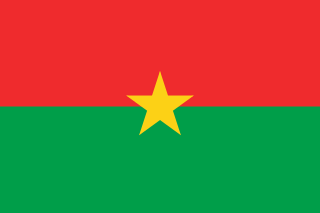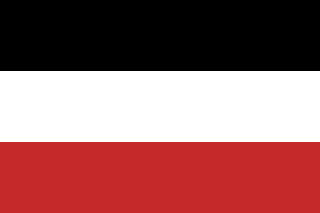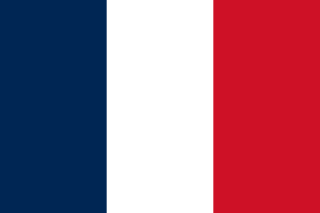
Burkina Faso is a landlocked country in West Africa, bordered by Mali to the northwest, Niger to the northeast, Benin to the southeast, Togo and Ghana to the south, and Ivory Coast to the southwest. It covers an area of 274,223 km2. In 2021, the country had an estimated population of approximately 23,674,480. Previously called the Republic of Upper Volta (1958–1984), it was renamed Burkina Faso by former president Thomas Sankara. Its citizens are known as Burkinabè, and its capital and largest city is Ouagadougou.

Burkina Faso is a landlocked Sahel country that shares borders with six nations. It lies between the Sahara desert and the Gulf of Guinea, south of the loop of the Niger River, mostly between latitudes 9° and 15°N, and longitudes 6°W and 3°E. The land is green in the south, with forests and fruit trees, and semi-arid in the north. Most of central Burkina Faso lies on a savanna plateau, 198–305 metres (650–1,001 ft) above sea level, with fields, brush, and scattered trees. Burkina Faso's game preserves – the most important of which are Arly, Nazinga, and W National Park—contain lions, elephants, hippopotamus, monkeys, common warthogs, and antelopes. Previously the endangered painted hunting dog, Lycaon pictus occurred in Burkina Faso, but, although the last sightings were made in Arli National Park, the species is considered extirpated from Burkina Faso.

Togo is a small Sub-Saharan state, comprising a long strip of land in West Africa. Togo's geographic coordinates are a latitude of 8° north and a longitude of 1°10′ east. It is bordered by three countries: Benin to the east, with 644 km (400 mi) of border; Burkina Faso to the north, with 126 km (78 mi) of border; and Ghana, with 877 km (545 mi) of border. To the south Togo has 56 km (35 mi) of coastline along the Bight of Benin of the Gulf of Guinea in the North Atlantic Ocean. Togo stretches 579 km (360 mi) north from the Gulf and is only 160 km (99 mi) wide at the broadest point. In total, Togo has an area of 56,785 km2 (21,925 sq mi), of which 54,385 km2 (20,998 sq mi) is land and 2,400 km2 (927 sq mi) is water.

The Republic of Upper Volta was a landlocked West African country established on 11 December 1958 as a self-governing state within the French Community. Before becoming autonomous, it had been part of the French Union as the French Upper Volta. On 5 August 1960, it gained full independence from France. On 4 August 1984, it changed its name to Burkina Faso.

The Volta River is the main river system in the West African country of Ghana. It flows south into Ghana from the Bobo-Dioulasso highlands of Burkina Faso.

The White Volta or Nakambé is the headstream of the Volta River, Ghana's main waterway. The White Volta emerges in northern Burkina Faso, flows through Northern Ghana and empties into Lake Volta in Ghana. The White Volta's main tributaries are the Black Volta and the Red Volta.

The Oti River or Pendjari River is an international river in West Africa. It rises in Benin, forms the border between Benin and Burkina Faso, flows through Togo, and joins the Volta River in Ghana.

The Red Volta or Nazinon is a waterway located in West Africa. It emerges near Ouagadougou in Burkina Faso and has a length of about 320 km at the end of which it joins the White Volta in Ghana.

Savanes Region is the northernmost of the five Regions of Togo. Dapaong is the regional capital and largest city. Another major town in the region is Mango.

Boucle du Mouhoun is one of Burkina Faso's 13 administrative regions. It was created on 2 July 2001 and had a population of 1,898,133 in 2019. It is the 4th most populous region in Burkina Faso, and contains 9.26% of all Burkinabé. The region's capital is Dédougou. Six provinces make up the Boucle du Mouhoun region—Balé, Banwa, Kossi, Mouhoun, Nayala, and Sourou.

Centre-Nord is one of thirteen administrative regions of Burkina Faso, a landlocked country in Africa. The population of Centre-Nord in 2019 was 1,872,126. The region's capital is Kaya. Three provinces—Bam, Namentenga, and Sanmatenga, make up the region.
Articles related to Burkina Faso include:

Burkina Faso is largely wild bush country with a mixture of grass and small trees in varying proportions. The savanna region is mainly grassland in the rainy season and semi desert during the harmattan period. Fauna, one of the most diverse in West Africa, includes the elephant, hippopotamus, buffalo, monkey, lions, crocodile, giraffe, various types of antelope, and a vast variety of bird and insect life. The country has 147 mammal species, 330 aquatic species including 121 species of fish and 2067 different plant species. Of the plant species, the dominant endemic species are shea tree and the baobab, the former plant species has immense economic value to the country.

Upper Volta was a colony of French West Africa established in 1919 in the territory occupied by present-day Burkina Faso. It was formed from territories that had been part of the colonies of Upper Senegal and Niger and the Côte d'Ivoire. The colony was dissolved on 5 September 1932, with parts being administered by the Côte d'Ivoire, French Sudan and the Colony of Niger.

The following outline is provided as an overview of and topical guide to Burkina Faso:
The Guan or Guang people are an ethnic group found almost in all parts of Ghana, including the Akyode people who speak Gikyode, Anii, Krachi people Nkonya tribe, the Gonja, Anum, Larteh, Akposo, Etsii in the Central Region, Nawuri, Nyagbo and Ntsumburu. The Guan are believed to have been the first settlers in modern day southern Ghana, migrating from the Mossi-Dagbon region of modern Ghana and Burkina around 1000 A.D. The Gonja of the Guan are however late settlers in northern Ghana, invading eastern Dagbon in the 1600s, capturing Daboya and many towns.
Nandom is the capital town of the Nandom Municipal of the Upper West Region of Ghana.

The Burkina Faso–Ivory Coast border is 545 km in length and runs from the tripoint with Mali in the west to the tripoint with Ghana in the east.

The Burkina Faso–Togo border is 131 km in length and runs from the tripoint with Ghana in the west to the tripoint with Benin in the east.

The Burkina Faso–Ghana border is 602 km in length and runs from the tripoint with Ivory Coast in the west to the tripoint with Togo in the east.

















